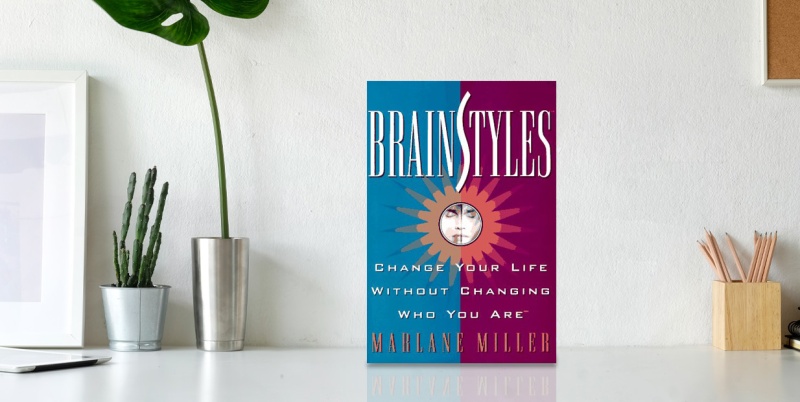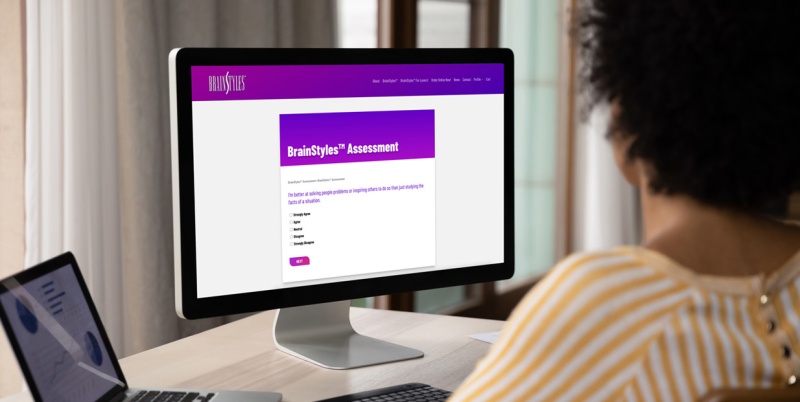- Category: Content

Do you find that you see situations differently from your partner?
Here is a situation where two people see the same situation very differently. The left-brained husband is more factual, quick to answer and objective; the right brain reacts without words until the feelings reach the left brain to speak them.
This is an example of a left-brained husband reacting very differently to a situation than his right-brained wife.
Him: Recently, at the ballpark Doug strolled up and pretended he’d known me forever. His man-hug put me off, but I smiled and responded in kind. Then he said he’d like to know where my next installations would be so he could “just hang out” with me to learn my processes. He’s starting a similar business. I politely said I didn’t have anything lined up. The following is the conversation I had with my wife regarding the situation.
Her: How’d you feel when Doug asked about your installations?
Him: Oh, I don’t know, there’s nothing going on right now for him to see.
Her: Sure, things have slowed down. But how’d you feel when he said he wanted to watch and learn your processes?
Him: It isn’t going to happen.
Her: I know, but how’d you feel?
Him: What do you mean?
Her: Well, it’s interesting to me that you’re onto a solution right from the start. So can you think back to yesterday and how you felt? (smiling)
Him: I was thinking “never happen” so it’s a non-issue. If he thinks I’m going to call him and tell him where I’ll be, that’ll never happen. (pause) Why, how’d you feel?
Her: I’ve been annoyed about it for the past 12 hours. I thought Doug was rude. I wanted him to praise your expertise and ask permission to get some insight from you if you weren’t too busy. You're objective, though. Since feelings don’t muddy up the experience for you, you're able to neatly package the “problem” and quickly reach a practical solution.
Him: She’s right; I’m objective in the moment. Then I realized a lot of people probably helped me when I was getting started, so I should probably help him. If he calls me and I’ve got something going, I guess I’ll tell him where to meet me.
NOTE: The left brain changes quickly, with logic and more input. The right brain changes slowly, with experience. Feelings come quickly , but are slower to get to the left-brain language that can conclude and speak.
What do you think? How would you feel about the situation? Would you find Doug’s behavior rude, or would you simply view it as a "non-issue" with an easy solution?
- Category: Content
Redefining Diversity Using BrainStyles™

In working with a well-known company who had conducted system-wide diversity training, I learned from the attendees that the gist of the message was to make them wrong for their hiring policies of the past. The managers were made to feel guilty for hiring the best and the brightest college grads, and, along with other guilt-laden discussions, were provided a simple answer: just hire more women and minorities. The purpose of doing so was not clear to them, other than that this was the law. The women and minorities in the room said they felt undermined, embarrassed. I am sure there was more taught than this, but that is the message they heard.
As a woman, I want to be hired because I’m the best, not because of my gender.
I have found that there are several stages in learning this material and applying it at work and at home. First, you use the typical ego-based labeling which is the source of all prejudice and stereotyping. Then, as your vision shifts to look beneath appearances, possibilities for getting along and working collaboratively emerge. Eventually you reach a neutral state, a detachment, in which you see the other for the gifts underlying their behavior. You value people you had disliked or overlooked previously. Often that process starts in your own family. Personal peace and mastery of your own gifts follow (although not always in that order).
I believe our deepest need is to transcend appearances and stop focusing on behavior change (in ourselves and in others) so that we can accept our genuine selves. Out of that inner peace will come societal transformation, where people can indeed be judged on the “content of their character.” Diversity training, for the most part, has attempted to mandate an outer fix to an inner problem, to apply a left-brained, neat solution to a non-verbal, experiential right-brained problem with relationships. It is the same as when mom tells you that you should love your sister. Only you can choose to do that, and not because you must.
The real solution, in my view, comes from a loving relationship with one’s self first. Then and only then, can one have loving and respectful relationships with others, looking past their “flaws,” which, in BrainStyle terms, are merely projections of self-criticisms, to the true gifts that lie beneath behaviors. Those relationships not only transcend the obvious diversity, but creative partnerships emerge from in-born differences.
- Category: Content
Working with a Left-Brained Coach
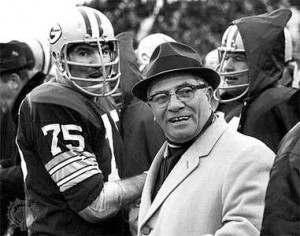
Vince Lombardi was, for the uninitiated, one of the “winningest” coaches of modern American football and took the Green Bay Packers to legendary status with his left-brained, tough, relentless focus on winning. He famously said, “Winning isn’t everything, it’s the only thing.” For those with his gifts, tough perseverance come naturally.
Another Coach. Grant is the father of an 8-year-old football player. He is assistant coach for his son’s local junior league team and has not coached before. He’s a quiet, laid-back man with a great sense of humor and a tremendous love of kids and sports. He is also very left-brained when it comes to his natural brain-based strengths.
The head coach, Mitch, father of a 7-year-old player, has several years’ experience as a youth head coach. He’s a friendly, easy-going sort with a ready and contagious laugh. He loves kids, football, and the outdoors. His job permits the endless hours he volunteers with the team and the city league’s administration. Mitch has right-brained strengths: inclusive, friendly, with a great sense of humor.
The first three weeks of practice prove frustrating for Grant, as he sees them as disorganized, unproductive, and time wasting because
- There is no playbook.
- The quarterback position has no back up.
- There are no printed rosters, making it hard to learn players’ names.
- There are no warm-ups at the start of the nightly practices.
The first three pre-season games are disasters, with kids lining up incorrectly and running in the wrong direction. Mitch laughs with the parents that it may be a LONG season, but that it’s still fun.
But Grant is not having fun. He questions whether he should have signed up for this and wonders if this volunteer coaching is suited to his brainstyle™. Yet he doesn’t want to quit the team and his commitment to his son.
The Coach Gets Coached. Grant talks over the problem with his BrainStyles™ coach. He has ideas but is worried about being too aggressive, taking over the team, and changing Mitch’s formula
As his coach, I don’t give Grant answers; I ask questions to help him discover the best solutions.
Grant believes his ideas will help the team feel more productive and keep the boys focused and not misbehaving. However, he worries that Mitch might feel “one-upped” for not having made the changes himself.
(Note: The “insensitive” left-brained person understands his impact and others’ reactions, especially as potential obstacles to achieve an outcome. His gifts serve a goal. Most are willing to take the risk to offend (confront, set boundaries) if it leads to a worthwhile goal.)
I ask Grant if Mitch is resistant to suggestions from the assistant coaches. Grant realizes that no one has said anything to Mitch, though they’ve complained to each other. He admits not talking to Mitch directly is detrimental to teamwork. He decides to suggest having pre-game warm-ups to see how Mitch reacts.
The Contribution. Grant arrives at practice early the next night. He tells Mitch that he’s concerned about the boys not warming up prior to practice and suggests that they start with a warm-up. Mitch likes the idea and tells Grant to lead them in the drills. Encouraged, Grant then asks whether he could assist with offense, and Mitch grants him the title of Offensive Coordinator.
Grant has created a BrainStyles™ Strengths Contract™ with Mitch, by providing his strengths of focus, instructions, and efficiency to realize achievable goals, while Mitch handles the essential details of organizing the equipment, communications, and schedule.
The results. Within two more weeks, the team went on to win every game and finished second in their division. Vince Lombardi and Grant have the same brain-based gifts and applied them to the same sport. One was more visible and made a lot more money coaching football, but both did it for the love of people, the game, achievement, and confidence building. Who is to say which of them made the greater contribution? One thing is clear: applying your gifts to support others is how you make a difference.
- Category: Content

While the early snow collects on the deck, one of our BrainStyles Certified Instructor/Coach partners remembers a funny brainstyle moment from a summer vacation.
Finally, the sun came through the clouds, and the family all agreed: time for a boat ride! While the men prepared the boat and water skis, Mom gathered up towels, snacks, sunscreen, and hats and tiptoed through the wet grass to the dock. Stepping around a mound of mud where the shore meets the dock, her first step slipped out from under her and she went down, slamming the other leg into the edge of a dock plank. Now in painful splits, she crept back up on the dock and tried to lift the bruised and bloody shin to lessen the pain and swelling. Her husband called out, “What happened?” while her son and nephew stood with open mouths, motionless.
“I slipped”, she squeaked. The three of them slowly came toward her. Her husband, with hands on hips, looked at the shin and the wet-heel slip marks on the dock planks and stated simply, “See, that’s why you never walk in the direction of the planks, only across the planks, especially when it’s wet.” He then went on to describe how he’d have built the dock to prevent such accidents.
Still wincing in pain, she watched him in amazement. Her husband’s left-brained gift at time zero sorts the information into logical and meaningful patterns that create a solution. Did she expect sympathy and a hug? Were she not in pain she might have laughed at her misplaced expectations.
Meanwhile, her detailed, analytical, and compassionate young son came closer, looked at her fresh wound and reached up to give reassuring hug and kisses, then helped her hold the leg up for relief. He suggested ice and a clean towel to stop the bleeding, repeating, “You’ll be OK, Mommy,” and, “Does it hurt bad?” Brushing back her bangs, he added, “Let’s go get ice from Grandma. Come on, you can do it.” Then he turned to his dad, surveyed the dock planks and assessed the problem, too. He nodded with understanding of Dad’s explanation, while Mom, smiling through tears, limped away to get ice.
Our brain is built to process new information in certain ways. There’s no getting around these gifts. We can forgive one another’s behaviors in the moment with this knowledge and look for those brain-based strengths to show up routinely, instead of demanding that our partners, friends, family members, and co-workers change to make us happier.
In short, left-brained people in our lives show their care and concern by fixing and preventing mishaps, while the right-brained show their care with hugs and supportive comments. Learning to manage our expectations of others goes a long way in respecting and understanding differences, letting go of the hurt from unmet expectations, and working together to solve problems and soothe hearts.
If you would like to join the growing BrainStyles community, please like our Facebook page! Happy Holidays and safe travels from all of us to all of you.
- Category: Content
A Primer
Learn more about BrainStyles and the science behind the revolutionary system.
The BrainStyles SystemR studies confirm areas originally identified as the left and right sides of the brain are accessed at different speeds, and in varying sequences, with the dialogue pattern genetically defined for each person. The BrainStyles System is the result of extensive research and testing in business and personal environments on how specific patterns of brain hardwiring determine an individual’s speed and approach to decision-making, risk-taking, conflict resolution, and relationships. Working and collaborating with an awareness of this “wiring” enable major contributions to projects with less stress. As the applications of the principles were applied at work, evidence of success with families quickly emerged, fostering the book BrainStyles for Lovers: Create Partnerships That Change Your Life Without Changing Who You Are (Brown Books Group, 2004)
Terms to Know
The LEFT side (hemisphere of the brain) structures what you see, uses logic to sort out the information and therefore is aware of consequences, understands “real” or tangible things, and most importantly, can speak. When you access the left brain most easily, you feel “in control of your thoughts” and thus you tend to take control of a situation.
The RIGHT side imagines, processes emotions, intuits, daydreams, and learns through experience to prefer images or stories, yet cannot use language. Fast and easy access of the right side of the brain can mean trouble putting things into words or in sequence at first. Those with this access, we have found, don’t like to take in information as much by reading the words as seeing the picture or hearing the example.
In order for you to think about something, the two sides of your brain must have a conversation, each specific part adding its particular expertise. This all happens across miles and miles of neural pathways (carried by the corpus callosum). You draw most naturally from the areas of the brain you can access most easily and effortlessly. A brainstyle, then, is shorthand for you at your best, most natural, and most able. Your natural abilities are observed most clearly when you must think about a new decision. Your timing –or brainspeed– is unique to you. You will learn why smart does not equal fast, as well as how to make the most of those who have a different thinking speed. The two books on BrainStyles® describe how to define your own brainstyle and put it to use without trying to change yourself or your partner.
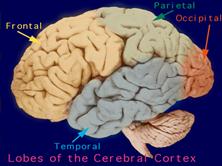
The Cerebrum: The cerebrum or cortex is the largest part of the human brain, associated with higher brain function such as thought and action. Also referred to as the cerebral cortex, the cerebrum is divided into four sections, called “lobes”: the frontal lobe, parietal lobe, occipital lobe, and temporal lobe. Here is a visual representation of the cortex:
What do each of these lobes do?
- Frontal Lobe- associated with reasoning, planning, parts of speech, movement, emotions, and problem solving
- Parietal Lobe- associated with movement, orientation, recognition, perception of stimuli
- Occipital Lobe- associated with visual processing
- Temporal Lobe- associated with perception and recognition of auditory stimuli, memory, and speech
- Note that the cerebral cortex is highly wrinkled. Essentially this makes the brain more efficient, because it can increase the surface area of the brain and the amount of neurons within it.
A deep furrow divides the cerebrum into two halves, known as the left and right hemispheres. The two hemispheres look mostly symmetrical yet it has been shown that each side functions slightly different than the other. The right hemisphere is associated with intuition and imagination and the left hemisphere is associated with logic. The corpus callosum is a bundle of axons which connects these two hemispheres.
Limbic System:
The limbic system, often referred to as the “emotional brain”, is found buried within the cerebrum. Like the cerebellum, evolutionarily the structure is rather old. This system contains the thalamus, hypothalamus, amygdala, and hippocampus. This system is included in what we now call the “right brain”.
Brain research has now been able to identify and name many parts of the brain that comprise each hemisphere, specifying functions that contribute to motivation, drive, process and memory storage, among others. The original research that identified the broad differences between the left and right sides of the brain are now metaphors for areas that refer to the frontal lobes of the brain, and include the temporal, parietal, and even the limbic system. In BrainStyles, the object is to allow for the immediate application of basic processing abilities called “strengths” without the in-depth descriptions of all the contributing factors.
For more information on the research and testing that led to these conclusions, go to www.brainstyles.com/research.
History
BrainStyles was developed in a recessionary business environment by an entrepreneur who rapidly turned a failing business into a $40 million enterprise. By leveraging employees’ brain-based strengths, he created and maintained outstanding quality, profitability, and market dominance. Since then, The BrainStyles SystemR was researched and developed into a business book, BrainStyles: Change Your Life Without Changing Who You Are (Simon & Schuster, 1997, 2013) and a variety of seminars that have been successfully applied with high-performing teams at Procter & Gamble, PepsiCo, Monsanto, Sears, Allstate, Turner Broadcasting, the Cox Business School at SMU, Dallas, and a wide variety of industries, non-profit organizations, and families. It is taught through an instructor/coaching network on four continents in nine languages. Distinct from all other personality-typing systems, BrainStyles defines the basis of personality that needs no changing, rather than behaviors and observations of others which focus on “self-improvement”.
In a comparison with 25 other psychological tests, the BrainStyles theory has been validated at a level of support that was rare in measurement literature, as well as rare in support of any theory in psychology (18 of 23 hypotheses were substantiated). The BrainStyles Inventory 2.0 has been proven to have a +/- 90% face validity in predicting brainstyle — transcending age, race, gender, ethnicity, culture, and education.
If you are interested in learning more about BrainStyles, read more on our website, take the self-test BrainStyles Inventory or contact a coach to get started. If you would like to join our online community, like us on Facebook.
- Category: Content
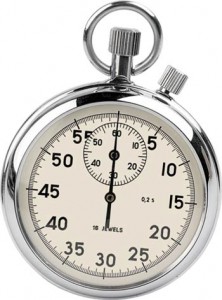
In BrainStyles™, there is a unique concept called “Time Zero.” Simply put, Time Zero is when you confront a new or unfamiliar situation and must use your natural brain hardware to think through an answer and take action, rather than remember what to do. This requires our natural brain processing, or brainstyle. Often this is disconcerting when we expect ourselves to be smart, quick, and know what we’re doing. We give up authenticity in favor of looking good.
I am reminded of the work of a Buddhist Nun called Pema Chodron. Her work is focused on the expansion of awareness– coming awake– by fully focusing on living in the moment without judgment. This does not exclude faith or reliance on God. She speaks to living in the moment no matter what, but especially when faced with discomfort, pain, stress, or decision.
All the great teachers talk of surrender in some form. The notion of Time Zero is rich in opening one’s awareness in the moment of stress or decision to slightly shift the focus to gifts, to strengths, to what works instead of what does not. This Buddhist philosophy says to enter these moments without judgment, to “neither indulge or repress” emotions or thoughts, but to let them be–thus opening the space for love and acceptance to emerge from who we truly are.
To those of us who seek to expand our lives, when faced with the thought that we have reached our limit, that we cannot endure the embarrassment or assault or shame, she asks that we open to the fullness of the moment’s emotions or thoughts and be with them in order to open our hearts more fully and truly to the love that is always available. “We will be softened by the sheer force of whatever energy arises…that very energy [of fear, anger, or resentment] to “go beyond hope and fear” into the unknown of the moment and trust the wisdom that is available within us at every moment. “How do we work with our minds when we meet our match? Rather than indulge or reject our experience, we can somehow let the energy of the emotion, the quality of what we’re feeling, pierce us to the heart. This is easier said than done, but it’s a noble way to live. It’s definitely the path of compassion–the path of cultivating human bravery and kindheartedness”.
Just how willing are we to lighten up and loosen our grip? she asks. As we embrace our strengths, it begins the process of loving kindness with ourselves and naturally expands to relationships. The most natural, authentic way to do so is in the moment, unrehearsed, out of a series of decisions and meditative practice we use to open our view from critique to seeing what is, without judgment. The outcome she speaks of, and that I hope to teach to many through the BrainStyles work, is to treat yourself with loving kindness which is NOT “self-improvement” or building yourself up, it’s a process by which self-deception becomes so skillfully and compassionately exposed that there’s no mask that can hide us anymore.” We embrace the fullness of who we are and who we are not, and we do so by embracing the moment, allowing more Time Zeroes. We allow an open approach to situations with the freshness and trust of valuing ourselves and others.
Learn about how you approach Time Zeroes and how you can apply this information everyday. Read the new e-books or order the BrainStyles books from the website.
- Category: Content
Use your experiences for the future.
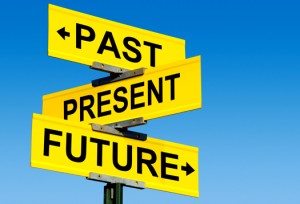 One of the earliest principles to emerge when teaching what was to become The BrainStyles System® was how to “reframe” criticisms by focusing on natural brain-based strengths. This came to mean re-looking at the labels you use to name what you do and who you are with the brainstyles definitions of strengths. Further work led to observations about the source of criticisms, along with the distinction between a brainstyle strength from a non-strength.
One of the earliest principles to emerge when teaching what was to become The BrainStyles System® was how to “reframe” criticisms by focusing on natural brain-based strengths. This came to mean re-looking at the labels you use to name what you do and who you are with the brainstyles definitions of strengths. Further work led to observations about the source of criticisms, along with the distinction between a brainstyle strength from a non-strength.
Taking these one at a time, let’s examine a typical self-criticism I’ve heard again and again from people in one of the brainstyle groups: “I’m too emotional.” The gift of the right-brained is to access the part of the brain that processes emotions first. Doing so allows experience, whole and visual, to influence decisions, interactions and families with a holistic emotional connection, a bonding, if you will. Allowing emotions into the equation means an immediate sensitivity and awareness that the more left-brained do not realize until later. Read more after the jump.
As soon as you hear or become aware of a criticism like the one above, you’ll know there’s a comparison being made. There are right and wrong judgments being made about the way to be you.
One of the mandates I was given by my behavioral science background was “strengths taken to an extreme are weaknesses.” If this is so, then Einstein should have been taken out of physics classes and given courses in literature to be more “well-rounded.” I disagree with the notion that tells us to rein in our strengths. I do so because the old conclusions were based on observance of outward behavior. The new paradigm looks behind the behavior to the hardware that creates it. BrainStyles teaches you how.
Observing the emotive folks among us, I believe that the real meaning of “too emotional” is being reactive, easily swept away by feelings that overpower common sense or logic. In fact, this is easily explained by brainstyle timing. A brainstyle describes how fast access to one area of the brain automatically means a delay in getting to another, different gift—the logic of the left brain, a non-strength in this example. When logic is prized over intuition, the offering of emotional experience or reaction interferes with another’s timing. They criticize. The right-brainer personalizes. Mars and Venus are at war.
Learning about one’s right-brained gift and the timing it requires leads to acceptance. The internal struggle eases, the focus shifts from How could I do that? Why am I so dumb? to Ah, I really feel that. I need a minute to think. Or I can share my reactions to help others understand the impact of this on people. Acceptance of natural strengths brings authentic contribution to the group, the partnership, and the family.
When others criticize, you automatically know they are expecting you to act and think like they do, with their own brainstyle strength. Not going to happen. Expectations, it’s been said, are premeditated resentments. Try to act like he expects you to and loss of self respect starts you down the slippery slope of people-pleasing, co-dependence, resentment and loss of the relationship.
Expectations are the source of upsets and conflicts: Why can’t you be more like your brother? Why can’t you understand what I mean when I say it the first time?
As you learn to focus on your natural abilities, you become less apt to defend, become reactive, or apologize for not being good enough. You will be more apt to offer what you can and cannot deliver in such a way that you develop respect. You re-frame the criticism/comparison into an authentic statement of what you have to offer. The more accepting you are the more neutral you’ll sound. You know, I can’t put things together as quickly and in order as you do, but I can give you a gut reaction that can tell us how to sell this to others. Or: My first take on this is negative, but I need time to think it over before I give you a final answer.
I’d like to share a personal example.
As a young girl, my stepdad had me clean up after our dogs. I had to go in the back yard and clean up their poop before there were pooper scoopers. I hated the job. I thought it was unfair and nasty and horrible. Fast forward to my twenties and thirties. In the lingo of the time, I came to label that childhood assignment as a form of “abuse.” Fast forward to BrainStyles writing and teaching. I am cleaning the litter box for my first kittycat. I recall the time in the backyard of my youth and how put upon I felt. I am touched by a feeling of gratitude. I can clean up my cat’s messes, no matter how gross, and have no problem with them. I saw the past trauma as a label I gave a job that today serves me well.*
Are you interested in taking another look at experiences in your life and reframe them? Visit our website to learn more about how you can get started with BrainStyles today.
*I do not intend to sugar coat some very real cruelty foisted on children by immature adults. I offer this option to “re-frame” old judgments and hurts with the wisdom and perspective of adulthood; to ask what the gift might be behind the behavior.
- Category: Content

Understanding your brainstyle will help you to learn how to effectively communicate with other personalities. In this case study, observe how Gary learns how to handle a tough boss.
Lou was standing when Gary came into his office. He opened impatiently, “It’s been a bad morning, Gary. I hope this won’t take long. I’ve got to catch a plane this afternoon. I just found out an hour ago.” Uh Oh, thought Gary, but, typical for his brainstyle, he showed no visible reaction when under pressure.
Gary, a twenty-nine-year-old plant manager for a well known brand, set a meeting with the operations vice president. He prepared for the meeting for weeks. Gary has held his position for 18 months, and knew it was critically important to impress the man he is looking at across the desk. In fact, it would not be far-fetched to say that this meeting would determine his entire future with the company. Everybody in the office said that Lou the VP had a temper and didn’t put up with much. Gary had heard that people came out of difficult encounters with Lou and “you never heard from them again.” Read more after the jump.
So Gary knew there was a lot on the line and had asked for an extra three days to prepare a report that carefully, thoroughly supported his request for a major expansion to the plant he managed. The amount was several millions and a serious request. Gary had a stack of papers and overheads to show with graphs and charts. And now, horror of horrors, Lou was saying he wanted a one-page summary starting with the “bottom line.” But Gary, given his brainstyle, wanted to explain what was involved in his conclusions so Lou would understand better what the decision required.
The worst then occurred. Lou actually pounded the desk and exploded,, “Damn it, Gary, just give me the punch line! You took an extra three days! What’s the decision?”
It must be said here that Gary had had a few sessions with brainstyles and had spent some time thinking about his strengths and what he was up against in dealing with Lou’s brainstyle. He wasn’t totally unprepared for this reaction, yet even so, his hands were quite clammy and his stomach had settled firmly at his feet. Gary’s natural strengths were solidly in his favor, however. He did not process the feelings as rapidly nor take Lou’s words as personally as some other brainstyles would. He answered rather coolly with what was to become the foundation of the BrainStyles® principles: respect for self and the other without asking that either change.
Gary looked squarely at Lou and said in his soft-spoken voice, “You know, I’m never going to give you the decision you want as fast as you want it. You’ll always be faster at that than I will. But I will tell you this: I will work as hard as I can and as fast as I can to make what I give you as accurate and as solid a decision as possible. It may take a few days longer, but you can bet that when you get it, you can take it to the bank. And,” he added, “there’s too many ‘hip-shooters’ around here. You need someone you can count on.”
Lou actually sat down. He looked squarely at Gary. Gary, he thought, was full of surprises. He concluded that Gary was a straight shooter (a value important to him and his brainstyle), that he was not just making an excuse for delays. It was the truth. From what Lou had seen, he was accurate and thorough. Gary was saying what he could be counted on for, and that he could be counted on to deliver it to meet Lou’s needs to the best of his ability.
Gary walked out with a yes for the $8 million budget increase. When he reached the parking lot he realized that Lou was actually a reasonable guy, and one only needed to approach him in the correct way. They had had a good discussion after Gary’s pronouncement.
They never had another meeting like that one again. Lou became one of Gary’s strongest supporters in the organization, recommending him for several promotions in the next few years. Gary spread the word that changed Lou’s reputation from fire-breather to respected leader. He has continued to apply the brainstyle principles with some half dozen new bosses and new teams that improved their productivity and worked well together by using their differences, including his study team in the Harvard Business School.
Using BrainStyles, Gary was able to understand how his brainstyle processed information and how that differed from Lou, his superior. The result was a productive meeting that led to many more successes within his position as plant manager. If you would like to learn how BrainStyles can help you effectively communicate with your colleagues, visit our website.
- Category: Content
Personal Mastery with BrainStyles™

Marlee Alex, an Oregon writer, begins an article entitled “Listening,” by describing how her self-inflicted criticism turned her natural gift into an adolescent curse.
“I am a listener. Natural born. But I didn’t always value this gift. In my teens I desperately wished to be like everyone else: bubbly, chatty, effusive. I even questioned if something was wrong with me because I was curious and quiet.” What a discovery when she began to see what she could do with the very ability she used to disparage. “I am beginning to see how my ease in listening is an art…. It’s active, involving, participative…” She lists what marvelous things being a listener provides. Without effort, she elicits stories, revealing the inner worlds of others just by being herself and doing what she does most naturally. The difference between Marlee and most of the rest of us? She is just being herself with purpose; she does what she does on purpose. Learn more after the jump.
Marlee volunteers at a women’s prison. What does she do? She is “present,” literally she just sits around, being available, as she communicates her acceptance of the women and where they are in life non-verbally. Mastering her gift of being a quiet introvert, she has developed her own art. Applying a gift in this way, she is a Master, in the fullest sense of the word.
And there’s more. Previously dreading social events, Marlee says, “Now before going to a party, I just tell myself to listen with affection. My attitude is ‘Tell me more.’ The result is [that] a person shows me his soul.” Social life now holds no fear. Marlee has discovered a career, a way to serve in the community, a whole lifestyle of being confident in what she has to offer. With a simple shift, what was invisible is now a celebrated asset. Her true colors, the best of her, are in the spotlight making her own and others’ lives richer and more satisfying.
It would seem most of us just stumble upon our gifts — without training, extra stimulation in pre-school, or even a very supportive environment.
There is a shortcut to a personal awareness of the gifts that can take you to your own personal Mastery. It’s called BrainStyles®, a systematic approach to identifying your natural, hardwired, brain-based gifts that need attention rather than work and stress to nurture and grow.
BrainStyles teaches you how to reframe your “curses” into the blessings that they are, just as the introverted listener became a writer. The approach establishes a framework for opening doors in your life, to create new awareness and lead to loving, respectful relationships. This approach that I live and teach, a philosophy and the tools to apply it, builds self-acceptance that can set you free to create a universe of people whom you appreciate for who they are and, just as importantly, for who they are not. As you do so, you live at ease with your own gifts and limitations. You expand out into life, fearlessly, by using your new wisdom to transform critical or fear-based reactions into more authentic, accepting responses. You give up expectations that just won’t happen. You stop trying to change anyone, especially yourself.
If you would like to get started with BrainStyles, take the personalized BrainStyle Inventory 2.0 (c) and get a 15 page description of your own and others' brainstyles.
- Category: Content
Problem Solving in Marriage
 In this blog post, learn how one husband and wife learned to appreciate each other’s different brainstyle for problem solving in marriage. The result was something that they both wanted – a new boat. Written by master facilitator Linda Bush, notice how each use their strengths work through a problem.
In this blog post, learn how one husband and wife learned to appreciate each other’s different brainstyle for problem solving in marriage. The result was something that they both wanted – a new boat. Written by master facilitator Linda Bush, notice how each use their strengths work through a problem.
The Way We Were
I’m accustomed to high stakes negotiating including several house purchases, corporate contracts while at IBM, and ongoing vendor/supplier deals in my consulting business. Thus, I’ve acquired the role for our family as the leader in major acquisitions. To be honest, I was self-appointed in spite of my distaste for such tasks as the negotiation of price or the comparison of details and facts. And I received praise from friends and family members for “handling it all”. So I kept on.
Soon after I learned about BrainStyles and the Strengths Contract. When my husband Gary and I made our next major purchase, I chose a different role. Learn more after the jump.
New Family Teamwork
From BrainStyles, we learned that we have two different ways of processing new information. I said to Gary, “You’re best at sorting the facts, asking pertinent questions, and focusing. I’m best at relationship building and imagining the possibilities. Let’s approach this purchase in a new way.”
We both pored over the ads. Gary called the sellers and asked the initial pertinent questions and narrowed the list of candidates to visit. We made the visits together, and when we saw a boat we really liked, I facilitated a “get-to-know-you-and-trust-you” conversation with the sellers, while Gary asked blunt and focused questions as he crawled in, around, under and through the craft.
Gary’s left-brained questions:
- Has the prop ever been replaced?
- Are those the true hours on the engine?
- Have you done mostly fishing or water-skiing with those hours?
- How many offers have you already had?
- What were they? Why didn’t you take them?
- Have you done the maintenance yourself or had it done at a dealership?
- Where does the moisture in the storage compartment come from?
- Has the hull ever been painted? If so, why?
- Have the brakes on the trailer ever been maintained?
- How many miles would you estimate are on the tires on the trailer?
- Why is the canopy moldy?
My right-brained questions:
- How long have you been boaters?
- How many children? Ages? Any grandchildren? Do they go along?
- When did you start teaching the kids to water-ski?
- What do your kids think about your selling the boat?
- Where have you done most of your boating?
- How have you managed to keep the seats in such nice condition?
- What will you do without a boat? New interests? Buying another one?
At first I thought some of Gary’s questions were too blunt and probing and sounded untrusting. I wondered if I should soften his interaction. Gary later confessed he thought my questions were too personal and sometimes irrelevant and wondered if he should distract me. Happily, we both let each other interact in our own way.
From our research, the seller’s price was reasonable. I felt good about the couple who was selling the boat and wanted to give them their asking price. Gary was prepared to walk away if they didn’t take his offer of $1,000 below asking price. He offered and they declined. We left in the rain. No boat, no deal. In the car, I expressed disappointment. Gary said, “Honey, there are lots of boats.” All I could think was how perfect this one matched my new Expedition and his F250!
The Win-Win
Two days later, the seller called us, expressed how much they liked us, and said they would meet our offer and throw in competition water skis, a kneeboard, six life jackets, two tow ropes, and a canvas boat cover. Gary asked how soon they could meet us at the bank to transfer funds for title. They arranged to meet in a couple of hours.
I released control of the negotiation and we got the boat we wanted, at the price Gary wanted, with $1,000 worth of barely used equipment.
If you are interested in learning about how BrainStyles can positively affect your marriage, please visit BrainStyles for Lovers. If you would like to meet Linda and learn about leading from your strengths, join us for an upcoming webinar.


